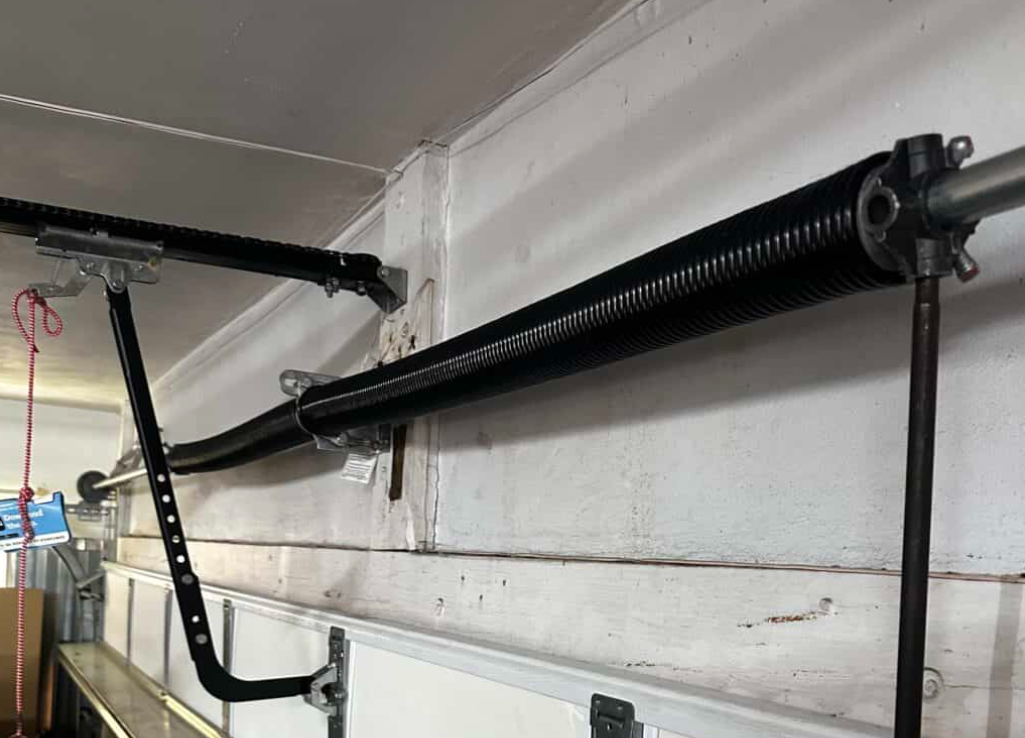How Long Do Garage Door Springs Last? Tips on Maintenance and Repair
- COMMERCIAL GARAGE DOOR REPAIR
- GARAGE DOOR OPENER INSTALLATION
- GARAGE DOOR SPRING REPAIR
- SAME-DAY GARAGE DOOR REPAIR
- CUSTOM GARAGE DOOR
- GARAGE DOOR OPENER REPAIR
- GARAGE DOOR TRACK REPAIR
- GARAGE DOOR CABLE REPAIR
- GARAGE DOOR PANEL REPAIR
- LOCAL GARAGE DOOR REPAIR
- GARAGE DOOR REPLACEMENT
- NOISY GARAGE DOOR FIX
- GATE REPAIR
- GARAGE DOOR INSTALLATION
- GARAGE DOOR SECTION REPLACEMENT
- OVERHEAD GARAGE DOOR REPAIR

How Long Do Garage Door Springs Last? Tips on Maintenance and Repair
Your springs are the unsung heroes of your home’s garage system. They lift, lower, and balance that heavy door multiple times a day without you even noticing. But how long should you expect them to last, and how can you maintain them to extend their lifespan? If something goes wrong, garage door spring repair is essential to restore the functionality and safety of your garage door. This blog will answer these questions and provide helpful tips to keep your garage door springs in top condition.
Understanding Garage Door Springs
Types of Garage Door Springs
There are two main types of garage door springs:
- Torsion Springs: These are located above the garage door and use torque to lift and lower the door. They’re known for their durability and smoother operation.
- Extension Springs: Found on the sides of the door, extension springs stretch and contract to manage door movement. They are generally used in older or smaller garage systems.
Both types play crucial roles, and knowing which one you have can help you better care for your springs.
Lifespan of Garage Door Springs
Average Lifespan
On average, garage door springs last between 5 to 10 years or about 10,000 cycles (a cycle meaning one full opening and closing of the door). If you use your garage door frequently, you might reach this cycle limit sooner.
Factors Affecting Lifespan
- Usage Frequency: The more often you use your garage door, the faster your springs will wear out.
- Maintenance: Springs that are regularly inspected and lubricated are likely to last longer.
- Environmental Conditions: Extreme temperatures and humidity can lead to rust and weaken the springs over time.
Maintenance Tips for Garage Door Springs
Regular Inspection
Check your garage door springs every few months for signs of wear and tear, like rust, cracks, or loose screws. Catching small issues early can save you from major repairs later.
Lubrication
Applying a garage door lubricant to the springs reduces friction and prevents rust. Aim to lubricate them every 6 months for smoother operation.
Professional Maintenance
While small checks can be done at home, schedule a maintenance check with a professional technician at least once a year. They can spot problems that aren’t visible to the untrained eye.
Recognizing Signs of Garage Door Spring Failure
- The door becomes hard to lift or close.
- The springs show visible damage like cracks or rust.
- You hear odd noises, like creaking or squeaking, while operating the door.
If you notice any of these signs, it’s time to act quickly before the springs fail completely.
Garage Door Spring Repair and Replacement
Springs operate under high tension and can cause serious injuries if handled incorrectly. Never attempt a DIY repair. Always hire a professional technician who has the tools and expertise to replace springs safely and efficiently.
By maintaining your springs and addressing issues early, you can save money on replacements and keep your garage system running smoothly for years to come with Mariner Garage Door Repair.
